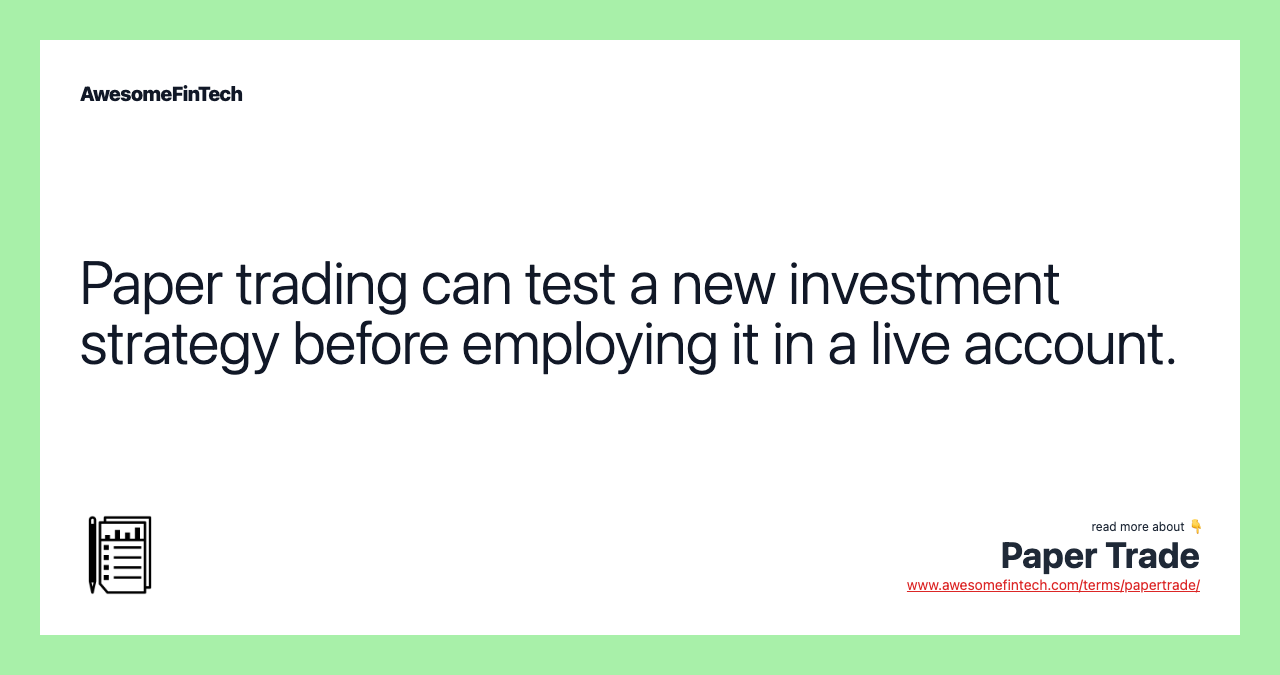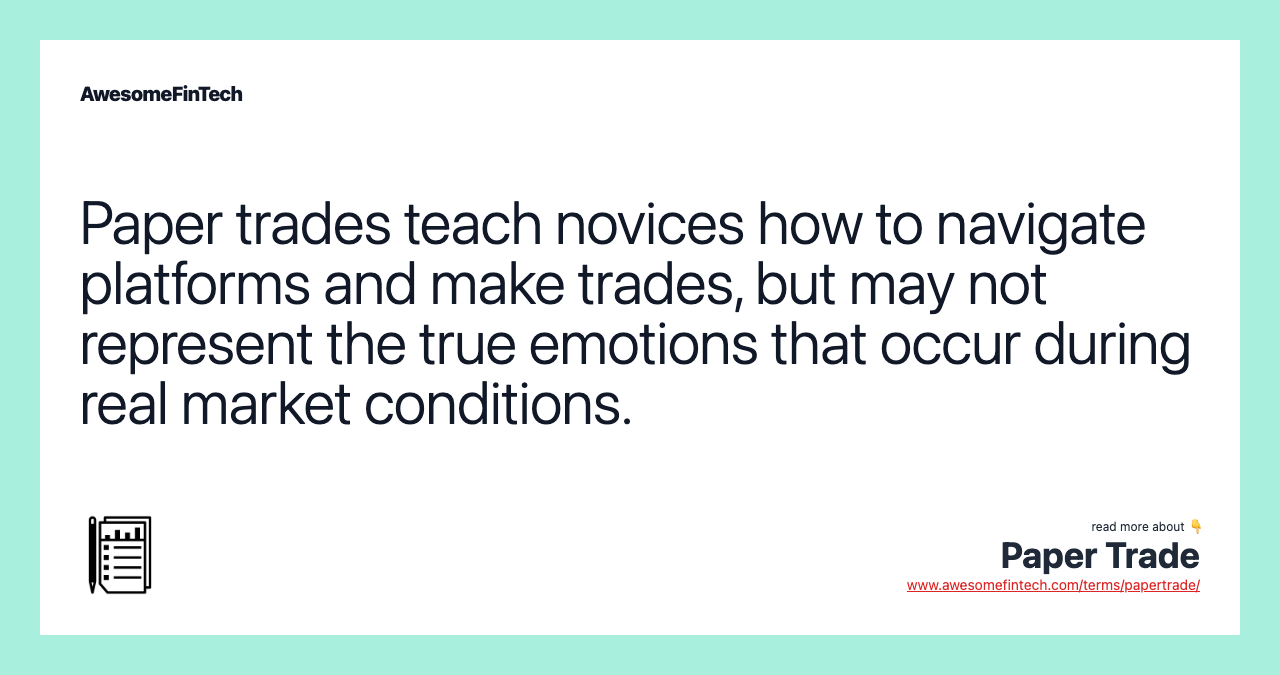Paper Trade
A paper trade is a simulated trade that allows an investor to practice buying and selling without risking real money. Also, paper trading allows for basic investment strategies — such as buying low and selling high — which are more challenging to adhere to in real life, but are relatively easy to achieve while paper trading. To get the most benefits from paper trading, an investment decision and the placing of trades should follow real trading practices and objectives. The term dates back to a time when (before the proliferation of online trading platforms) aspiring traders would practice on paper before risking money in live markets. A paper trade is a simulated trade that allows an investor to practice buying and selling without risking real money.

What Is Paper Trade?
A paper trade is a simulated trade that allows an investor to practice buying and selling without risking real money. The term dates back to a time when (before the proliferation of online trading platforms) aspiring traders would practice on paper before risking money in live markets. While learning, a paper trader records all trades by hand to keep track of hypothetical trading positions, portfolios, and profits or losses. Today, most practice trading involves the use of an electronic stock market simulator, which looks and feels like an actual trading platform.




What Does Paper Trading Tell You?
The development of online trading platforms and software has increased the ease and popularity of paper trading. Today's simulators allow investors to trade live markets without the commitment of actual capital and the process can help to gauge whether investment ideas have merit. Online brokers such as TradeStation, Fidelity, and TD Ameritrade's thinkorswim offer clients paper trading simulators.
For example, TD Ameritrade's paperMoney® is designed to help customers try options and different investment strategies without the worry of losing any money. Nearly everything about the simulator is the same as their feature-rich thinkorswim trading platform, except the investor is not trading real money. Investopedia provides a free simulator for trading stocks.
To get the most benefits from paper trading, an investment decision and the placing of trades should follow real trading practices and objectives. The paper investor should consider the same risk-return objectives, investment constraints, and trading horizon as they would use with a live account. For example, it would make little sense for a risk-averse long-term investor to practice numerous short-term trades like a day trader.
Also, paper transactions can be applied to many market conditions. As an example, a trade placed in a market characterized by high levels of market volatility is likely to result in higher slippage costs due to wider spreads compared to a market that is moving in an orderly manner. Slippage occurs when a trader obtains a different price than expected from the time the trade is initiated to the time the trade is made.
Investors and traders can use simulated trading to familiarize themselves with various order types such as stop-loss, limit orders, and market orders. Charts, quotes, and news feeds are available on many platforms as well.
Paper Trade Accounts vs. Live Accounts
Paper trading may provide a false sense of security and often results in distorted investment returns. In other words, nonconformity with the real market happens because paper trading does not involve the risk of real genuine capital. Also, paper trading allows for basic investment strategies — such as buying low and selling high — which are more challenging to adhere to in real life, but are relatively easy to achieve while paper trading.
The fact is that investors and traders are likely to exhibit different emotions and judgment when risking real money, which may lead them to different behavior when operating a live account. For example, consider a real trade by a new foreign exchange trader who enters into a long position with the euro against the U.S. dollar ahead of nonfarm payrolls data. If the report is much better than expected and the euro drops sharply, then the trader may double down in an attempt to recoup losses in a paper trade, as opposed to taking the loss as would be advisable in a real trade.
Related terms:
Autotrading
Autotrading is a trading plan based on buy and sell orders that are automatically placed based on an underlying system or program. read more
Currency Trading Platform Defintion
A currency trading platform is a type of trading platform used to help currency traders with forex trading analysis and trade execution. read more
Day Trader
Day traders execute short and long trades to capitalize on intraday market price action, which result from temporary supply and demand inefficiencies. read more
Demo Account
A demo account is a trading account that allows an investor to test the features of a trading platform before funding the account or placing trades. read more
Investment Strategy
An investment strategy is what guides an investor's decisions based on goals, risk tolerance and future needs for capital. read more
Long Position
A long position conveys bullish intent as an investor will purchase the security with the hope that it will increase in value. read more
Mobile Trading
Mobile trading refers to the use of wireless technology in securities trading and allows investors to use their smartphones to trade. read more
Nonfarm Payroll
Nonfarm payrolls is the measure of the number of workers in the U.S. excluding farm workers and workers in a handful of other job classifications. read more
Profit and Loss Statement (P&L)
The profit and loss statement is a financial statement that summarizes the revenues, costs, and expenses incurred during a specified period. read more